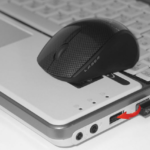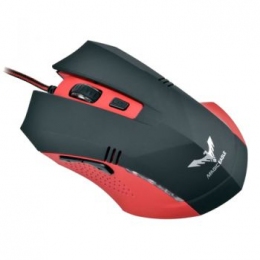In what year was the computer mouse invented?
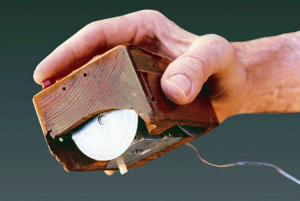 One of the main accessories for a desktop computer, and a laptop too, is a computer mouse. With its help, all functions and capabilities of the device are controlled, so it is quite difficult to do without it. And although laptops are distinguished by the fact that they have a touch control panel, not everyone finds it convenient.
One of the main accessories for a desktop computer, and a laptop too, is a computer mouse. With its help, all functions and capabilities of the device are controlled, so it is quite difficult to do without it. And although laptops are distinguished by the fact that they have a touch control panel, not everyone finds it convenient.
That is why most users prefer to purchase a computer mouse, so that the operation of the device is as comfortable and understandable as possible. But do you know in what year the very first mice were invented and who invented them? Why did this particular design seem to manufacturers to be the most convenient and acceptable for controlling computers? You can learn about all this in this article. In addition, it is very interesting to trace the evolution of this device - the way mice have changed over time is truly amazing.
The content of the article
Who is the inventor of the computer mouse?
It is necessary to figure out exactly when these devices appeared and who became their creator.
The first such manipulator was presented on December 9, 1968. Its inventor was Douglas Engelbert, who received a patent only in 1970.The mouse was shown at an exhibition of interactive devices in California, where it immediately attracted the attention of most visitors.
Who is Douglas Engelbert? His inventions include not only the familiar mouse, but also other things that we are used to using in the modern world. For example, text editor, hypertext, graphical user interface.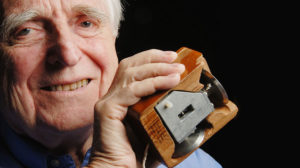
This American scientist has a huge number of patents for a variety of inventions. He made a huge contribution to the development of computers, thanks to which modern models are equipped with an intuitive interface and many functions and applications. Douglas Engelbert also has awards awarded for his developments in the field of technology. The scientist lived until he was 88 years old and died quite recently, in 2013.
All of these discoveries were made at a time when the general public did not use computers. No one had them, and they were present exclusively in some industries or factories. The first mouse consisted of a wooden body and had two metal wheels.
The name, which is so common now and firmly attached to the device, is explained by the fact that the wire, which was its mandatory attribute, very much resembles a mouse’s tail. And although wireless mice, headphones and other accessories are now increasingly used, no one is going to change their name.
History of the creation and development of a computer mouse
Now let's look at the future fate of the device. It gained popularity immediately, back in the seventies of the last century, because it was convenient and compact, and the control of any devices for which it was intended was greatly simplified.
The computer that included a mouse was the Alto. Although practicality and ease of use were immediately recognized by a huge number of people, the mouse had to undergo some changes. Firstly, the body began to be made of plastic - it is cheaper and the device is lighter. Currently, almost all models are made from this material.
The wire, which so strongly influenced the name of the manipulator, has moved to the foreground. That is why it is now more difficult for us to unravel the nature of such a nickname - now the device does not look as much like a real mouse as the original version.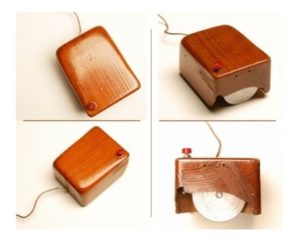
Buttons, which are one of the main elements, have become more convenient to use. And the roller discs used before gave way to the balls that are still common today.
Then came the optical mouse. It works using an optical sensor. But wireless models did not appear as recently as it seems - back in 1991. But they did not gain much popularity then - transmitting the signal not via wire, but using infrared waves slowed down the operation of the device too much. Therefore, the vast majority of computers were equipped with ordinary mice with a “tail” made of a familiar cable.
By the way, the inventor himself did not participate too much in improving the gadget he invented - all developments were carried out mainly by other inventors. Douglas at that time had health problems, which forced him to take time away from work in this field. He also received a not too large fee. This indicates that inventions were his calling and were not created for the sake of money or profit.
Nowadays it is impossible to imagine a single desktop computer without a mouse, although they are very different from what was shown at the exhibition in California in 1968. Let's look at the primary version and determine how else it differs from the mouse that you may now be holding in your hands.
What the first computer mouse looked like
After the first mouse was introduced, most scientists realized that all existing control methods were not as effective as previously thought.
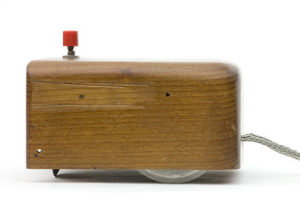
This device had practically nothing except a control dial, a protruding wire and a very bulky case. The mouse movement sensor, which has changed the most over time and has become almost unrecognizable in our time, was presented in this invention in the form of two perpendicular wheels, they protruded from behind the body. When moving, they rotated in their own dimension, which made it possible to control the computer.
This model had quite a lot of shortcomings, so this part of the mouse was one of the first to be changed for the sake of comfort in using the device.
For a very long time after this, a ball drive was used, but this design was far from ideal. There was constant contamination of the mouse element, which led to it jamming and required regular cleaning of the device.
After that, there were many more different ways to move the mouse so that it was convenient and the design did not overly affect the functionality and performance of the accessory.
The most modern development, which has not yet become widespread due to its high cost, is a mouse that can be used regardless of the availability of a surface on which it can be placed.This means you can control it even in the air - a great option for those who refuse to use a full-fledged mouse in favor of a touch one when working in bed or other less suitable places.
Such devices are incredibly small and weigh no more than 13 grams, which makes them a very attractive manipulator for controlling your device. But this invention will not reach the general public soon - now the technology is at the development stage and is used exclusively for professional purposes.
The number of buttons on the mouse is also important. Initially, a variety of manufacturers produced either two-button or three-button models, which made it impossible to connect one mouse to a computer from another company. But with the advent of the well-known wheel, which now plays the role of that very third button, this problem was solved.
Conclusion
Thus, the invention of the computer mouse, which dates back to around 1968 when the mouse was introduced to a circle of scientists, was an important moment in the development of computers. And although at that time they did not yet have such a huge influence on the life of society that they have now and were not so widespread, the mouse made controlling the device as simple and understandable as possible. Now any user can buy a computer at home and use it for his own purposes, and he does not have to study a huge control manual, as would be the case with using a keyboard.
The first device, which became the prototype of all currently existing mice, was significantly different from modern ones not only in appearance, but also in functionality and ease of use.The mouse has come a long way in development, thanks to which it is now an integral part of any PC on the market.



